-

Hunan Hengshan Jingang stupas lies in Ruiying peak which at the back of Nantai temple. It has an elevation of 600 meters, which is China’s largest Jin Gangli pagoda in jiangnan mountain. The tower is 48 meters high, which covers an area of 233 square meters. The building has eight points and nine floor. The tower has 256 steps.The cultural relics departments of the state and the Chinese buddhist association identified two Buddha sarira to serve on the top floor. The tower began in July 1993, formally finished on May 15th, 1998. At that time, more than ten thousand practitioners at home and abroad attended the event.Translated by Sophia
Changde & Yueyang & Hengyang
2012-05-31 23:11
View:3173
-
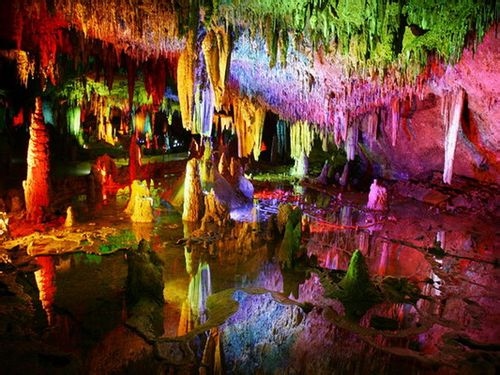
Shimen Longwang Cave is located in Wangyangqiao Village, Baiyang Town of Shimen County. In fact, it is a peculiar big karst cave in the northern part of Wuling Mountain, lying in the same recreational route as Wulingyuan. The North-south Longwang Cave has a long history of about 0.6 billion years and a overall length of 10 miles. Over there, water flows through the whole cave. In total, more than 60 scenic spots are seen, sceneries by steps, treasures in every where. Favorable climate (warm in winter and cool in summer) makes Longwang Cave a wonderful resort.The constructing project of Longwang Cavewas begun in March, 1987. From the New Year’s Day in 1988,Longwang Cavewas open to the public. In the north of Longwang Cave, Xianren Cave and Xiannv Cave are still waiting for exploiting.Translated by Becky
Changde & Yueyang & Hengyang
2012-05-16 15:31
View:4530
-
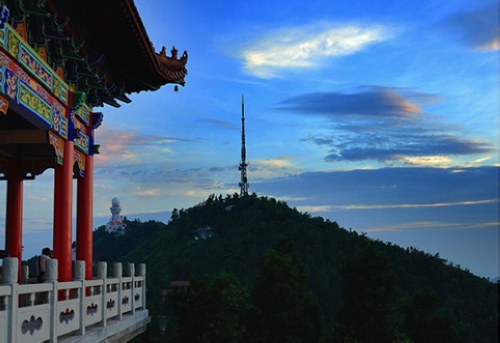
Hunan Changde Taiyang(Sun) Mountain, A majestic and splendorous holy mountain, is located 14 meters away from the downtown of Changde, a city granted as Charm city in China for tourism.Hunan Changde Taiyang(Sun) Mountain, also named as Liang Mountain, used to be the cultural center of Buddhism and Taoism. There have been numerous temples and Taoist abbey around Liang Mountain since Donghan Dynasty, thirty relatively famous ones including Bailu temple,Liangwang Palace, Yangshan Abbey,Xingguo Temple,Lingquan Temple,Chongqing Temple. It has been crowned as the center of 42 temples and 72 abbeys, which is the heart of religion and culture rarely seen at that time.Beautiful mountains and crisp waters will capture your eyes when you approach it. By climbing to the top of the mountain, you will find yourself immersed in a picture where bustling city life and natural beauty perfectly blend.By Brenda
Changde & Yueyang & Hengyang
2012-05-08 14:30
View:4289
-
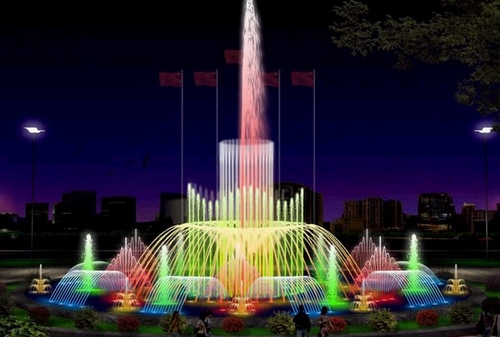
Sweltering summer is around the corner, how and where to relieve yourself after whole days’ work without paying. This summer will be different for people who have experience in the White Horse Lake Cultural Park, which is located in Changde city, north of Hunan province. Covering a total area of 625 mu (1MU=667 Square Meters), the White Horse Lake Cultural Park is crowned as a green heart of Changde city. It combines functions of collective leisure, sightseeing, city culture display, fit and fun into one. Urban Planning Exhibition Center,Mass Art Exhibition Centerand Urban Construction Archives Centerare the three exhibition centers in White Horse Lake Cultural Park.Most impressing scenery is the musical fountain. Every night from 19:30 to 21:30, the musical fountain always attracts groups of passengers. Approximately speaking, the water spout can reach 150 meter high. In hot summers days, to have relax and fun in this “green heart” will be comfortable and relieving.By Aileen
Changde & Yueyang & Hengyang
2012-04-18 23:12
View:3999
-
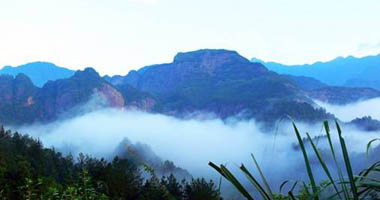
Huping MountianHuping Mountain(kettle-shaped Mountain), Roof of Hunan, located in Shimen County, is the state-listed nature reserve as well as one of the 200 global key ecological areas. It is also famous as a natural labyrinth of Global Fantastic Circle and a species gene bank in Central China. Huping Mountain National Level Protection Area covers an area of 45000 hectares. The whole natural protection area covers an area of 665.7 square kilometers.350 million years ago. Huping Mountain with perilous peaks and deep valleys embodies 266 peaks at an altitude of over 1000 meters and a major lofty peak, 2098.7 meters above sea level, which is the highest peak of Hunan. It boasts the deepest, narrowest and grandest gorge in Mid-east area. The gorge, over 200 kilometers in length, with a relative height of peaks and valleys varying from 800 meters to 1000 meters, exposes a great deal of typical annual sections, including the largest Cambrian Stratum section in the world. Huping Mountain has plenty of waterfalls, water-eroded caves, streams in the crisscross network. The largest Huping Waterfall is 400 meters in height and 20 meters in width. Once Libai(a great poet of Tang Dynasty) traveled here and made a comment that waterfalls splash in Huping, peach flower falls down the mouth of cave. Rafting in Huping Mountain, which has more than 80 dangerous shoals up to 22 kilometers in length and a waterdrop in level of over 90 meters, is characterized by \"the whirling rapid flow\".The area from Nishi Town to Dingping Mountain with an altitude of 1870 meters, is the best place for eco-tour. As not affected by the fourth glacier, Huping Mountain remains well entironment and a mass of rare plants. It is regarded as \"the gene pool of central China\" by experts home and abroad. In Hupingshan there are 172 kinds of terrestrial vertebrates , 53 of which are rare and endangered animals Such as the South China tiger, leopard, black bear, monkey, serow, golden eagle, red-bellied Tragopan, short mouth swiftlets, giant salamander, etc. So it is also confirmed to be one of the 200 global key eco-areas by International Nature Fund and two other international organizations.AttractionsTo watch the seasons change in a place with every natural beauty - mountain peaks, rivers, flowers and forests, Huping Mountain in Central China\'s Hunan Province is your best choice. The mountain is the highest peak in the province at 2,098-metres. But climbing to the very top of the mountain is beyond most visitors and is usually left to the more skilled and fit climbers. However, they are rewarded for their efforts by the panoramic views available from the mountain peak and the fact that they have to share the place with fewer tourists. Flying waterfalls 1or less adventurous visitors, the mountain\'s biggest waterfall is the next attraction. It has been praised for its beauty and power for centuries. The renowned poet Li Bai of the Tang Dynasty (AD 618-907) wrote a famous poem about it. But when visitors walk into the Bizigou,(鼻子沟) they will be surprised to find many other waterfalls dropping gracefully into the narrow valley. In one section, there are dozens of waterfalls of different sizes falling in plumes of white foaming thunder onto huge boulders on the floor of the valley. Most of the more spectacular waterfalls have their own names such as Beauty Waterfall, where several beauties were said to have been seen bathing in ancient times. Another is named Tongziniao(童子尿) (Boy\'s wee-wee) Waterfall because it looks like a little boy doing weewee from the mountain. Bathed in the moisture provided by the waterfalls, the trees and grasses are more green and fresh than visitors are used to. Steep valleysTo view more beautiful waterfalls, travellers must pass through some narrower valleys. Dozens of rivers and waterfalls that have been flowing for hundreds of thousands of years have carved out these deep and sheer valleys. High trees shelter the valleys and even on sunny days, the light in some of the valleys is a little dim. In some valleys with their steep sides more than 800 metres high, it can be a little frightening, as if the waterfall roaring down could swallow its visitors. Care should be taken when climbing in some valleys because they can narrow quite sharply and it can be difficult to pass. Valleys such as Jinjiahe Valley, Xianglianhe Valley and Huanglianhe Valley with different but beautiful views are all worth visiting. Some peaks in the surrounding mountains look strange. After many thousands of years of wind and rain, some strange-looking stone bridges, caves and cracks have been created by Mother Nature. Mount in sunsetThe region is also famous for its colourful sunsets. More than 6,500 kinds of flora and fauna live and grow around Huping Mountain. Wenfeng Peak stands lonely against the sky to the north of Huping Mountain. It looks like a bamboo shoot from the southwest. But if you stand to the northwest of the peak, it looks like a pile of donkey manure and its original name was \"Donkey Shit Peak\". The poet Li Bai, mentioned above, thought the name was not elegant so he changed it to Wenfeng Peak. Farmers have tamed the wild mountain with terrace fields and it now has layers of green growth in the spring and summer, while in the autumn, it looks golden. Name: Huping Mountian City: Changde City Address: Shimen County of Changde City, Hunan Province Hours:7:00-18:00 Tel: (86) 0736-5334190 Address: Shimen County of Changde City Admission: CNY 50 Transportation: There are long-distance buses to Shimen County in Changsha Western Station, which starts at 8:50,9:20, 10:30, 12:50 ,14:20,15:00 15:30,20:00 or 22:20. There are trains going to Shimen county at the Changsha Railway Station.The detailed information is listed in the table below. In Shimen Western Station, the Buses driving to Jiangping and Nanping can bring you to Huping Mountain.
Changde & Yueyang & Hengyang
2010-10-05 20:39
View:6200
-
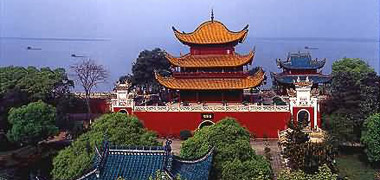
Landscape spots: Baling landscape (including Yueyang Tower, Junshan Island, Memorial Temple of Qu Yuan and Zhang Guying Folk Custom Village) For More Yueyang,formerly knowns as Baling or Yuezhou, is a historic and cultural city with a long history of more than 2,500 years. Located at the northeast of Hunan Province, neighboring Jiangxi Province in the east and Hubei Province in the north, Yueyang was a hinterland of military importance during the past dynasties. Nowadays, renowned for so many historic interests, Yueyang is ranked as one of the China\\\'s Top Tourism Destination Cities.Yueyang\\\'s real charm rests with human cultural relics as well as the natural landscape.Yueyang City\\\'s attractions includies Yueyang Tower, Junshan Isle, Memorial Temple of Qu Yuan and Zhang Guying Folk Custom Village. AttractionsYueyang Tower(Yueyang Lou) Located on the west city wall, the Yueyang Tower is one of three famous towers in South China, the other two being the Yellow Crane Tower in Wuchang and the Prince Teng Pavillion in Nanching. The predecessor of Yueyang Tower was a structure built during the Three Kingdoms period (220 -280 AD) for reviewing military parades. In the fifth year of Emperor Qingli\\\'s reign of the Song Dynasty (716), it was rebuilt, and famous Song Dynasty essay writer Fan Zhongyan(范仲淹) wrote his famous essay \\\"Notes on Yueyang Tower\\\", which was considered matchless in literary beauty and profound thought. Yueyang Tower stands close to Dongting Lake, facing Junshan Isle with the city behind. The main tower, 19 meters high, is a three-story structure supported by four pillars and made of pure wood and upturned eaves. Especially noteworthy is the tower top which resembles a helmet used by warriors in ancient times, a real rarity in the history of ancient Chinese architecture. The structure is a unique combination of artistic tastes, mechanics, architecture, and craftsmanship. The Tower affords a spectacular view of Dongting Lake. Name:Yueyang Yueyang Tower(Yueyang Lou)City:YueyangAddress: on the west city wallAdmission:CNY 46 for adults & CNY 25 for kidsHours:8:00-16:00 Tel:0086-730-8311676 Junshan Isle Junshan Isle is the most famous island in Dongting Lake. It consists of 72 hilllocks, covering an area of 0.96 km2 and rising only 55 meters above sea level. There are many scenic spots and places of historic interest, and many touching fairy tales are told about the island. As the old saying goes, \\\"the water in the Dongting Lake and Junshan in it are viewed as green from the distance. The island resembles a green snail in a silvery plate.\\\" This line was used by ancient people to describe the beautiful scenery of Junshan. The islet, small enough, used to be crowned with as many as 36 pavilions and 48 temples, which were mostly in ruins at the time of liberation. Since the park was established in 1979, many historic sites have been renovated.The Tomb of TWO Concubines is enveloped in a moving story. Legend has it that the two beauties buried here were daughters of Emperor Yao, a mighty trial leader at the end of the primitive society. When Shun succeeded their father, they were married to him as imperial concubines. Unfortunately, Shun died a sudden death when he went the rounds in present-day Ningyuan County of Hunan. The two concubines heard of his death and were heart-broken. At last, they died of grif. To commemorate them, people built the tomb in the east of islet and renovated it dozens of times. Name:Yueyang Junshan Isle (Junshan Dao)City:Junshan county in Yueyang cityAdmission: CNY 60Transport: No.15 sightseeing bus goes from Yueyang Railway Station to the Junshan Scenic Area for 40 minutes & 5 yuanTel: (86)730-8159311Memorial Temple of Qu Yuan Memorial Temple of Qu Yuan is a tourist attraction especially sacred to literary men .It was built on a hill by the Miluo River in memory of Qu Yuan(340BC-278BC), a great patriotic poet and upright stateman of the State of Chu during the Warring States Period(475BC-221BC) .He was exiled late in his life to present-day Miluo. Though in disfavor, he was especially concerned about the fate of his mother-land and had his patriotic feelings crystallized in his collections of poems. At the news of the subjugation of his mother-land by the state of Qin, he was plunged into grief and despair, and, clasping a big stone in his arms, he drowned himself in the Miluo River.The temple is on the Yusishan Mountain in Miluo of Yueyang. Covering an area of 7.8 acres on top of a woody hill by the Miluo River, dates back to 1756. It was surrounded by a grey brick wall and shadowed by old phoenix trees. The front gate is guarded by eight stone divine lions, and the archway is decorated with sixteen painting the life of Qu Yuan here. The main hall is a large structure of wood and brick with a single- eaved roof that covered with yellow glazed tiles. Poetry and proses grieving the death of Qu Yuan are inscribed on the four stone walls. In the front hall is a huge wooden board inscribed with The Biography of Qu Yuan by Sima Qian. Name: Memorial Temple of Qu Yuan(Quzi Ci)City:Miluo in Yueyang cityAdmission: CNY 15Transport: From Yueyang city by train to the Miluo railway station or by coach direct to Miluo city then take a bus to reach Memorial Temple of QuYuan directly. Zhang Guying Folk Custom Village Zhang Guying Folk Custom Village is located in Yueyang. This is a group of building connected by a big family. With the expanding of the family, the whole building was expanded too. The group building is still in good conditions despite being through so many years. Its sewing system is very advanced which gains the interest from many architects. Name:Yueyang Zhang Guying Folk Custom Village (Zhang Guying Cun)City:YueyangAddress: Yueyang county in Yueyang cityAdmission: CNY60Hours: 8:00-18:00Tel:0086-730-8311676Transport:Every day there is a bus to Zhang Guying Village in eastern bus station of Changsha, its departure time is at 1:50 pm, full fare 20 yuan.Transportation from Changsha to YueyangIn Yueyang, tourists need no worries in regard to transportation. Tourists can reach Changsha Huanghua International Airport which is only 130 kilometers (80.78 miles) from Yueyang and takes about one hour\\\'s ride on the high-speed motorway to Yueyang. The high-speed motorway system for road transportation has been long established in Yueyang and radiates in all directions. Transportation by water is also convenient in Yueyang because Yueyang is the only port in Hunan Province which is beside the Yangtze River.
Changde & Yueyang & Hengyang
2010-10-05 20:32
View:5314
-
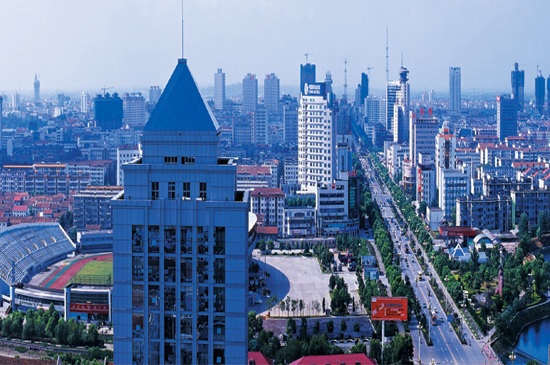
Located in the northwest of Hunan Province, the city of Changde is adjacent to the vast Dongting Lake on the east, lies within easy access to Yiyang City to the south, is connected to the Wuling and Xuefeng Mountains to the west, and borders Jinsha and Yichang to the north. Due to its advantageous geographical location, the city was historically called “the throat of Guizhou and Sichuan and the gateway of Yunnan and Guizhou”. Previously it was called Changde Prefecture, and it was renamed Changde City by the State Council in June 1986. The jurisdiction of Changde covers Wuling District, Dingcheng District and six other counties including Hanshou, Taoyuan, Linli, Lixian, Shimen, Jinshi and Anxiang. Jinshi city is governed by Changde on behalf of the Hunan provincial government. Changde has an area of 18,200 km2 (116 km2 urban) and a total population of 5.87 million (500,000 urban). The city is both historically important and contemporarily famous. As an ancient city, Changde boasts a unique feature. According to scientific research, there were human beings inhabiting here some 8,000 years ago. It lay in the area of Jinzhou, one of the nine regions at the time of the Xia, Shang and Zhou Dynasties. It was the central area of Chu and Qian in the Warring States Period, while in the Qin Dynasty it belonged to the central county of Qian. It was called Wuling County in the Han Dynasty and named Langzhou in the Sui Dynasty, and Dingcheng in the Song Dynasty. In the 7th year of the Song Dynasty under Emperor Huizong (1117 AD), Changde County was established, and in 1165 AD (the first year of Song Emperor Xiaozong), it was upgraded to be Changde Prefecture. The name of Changde has been used ever since. Changde has produced many important figures in Chinese history. Many fine works of literature praising the beauty of Changde’s landscapes have been written here by many historical masters like Qu Yuan, Tao Yuanming and Liu Yuxi. In contemporary times, a group of important people and revolutionaries emerged from here, including Lin Xiumei, Jiang Yiwu, Song Jiaoren, Lin Boqu etc., and literary celebrities such as Ding Ling, and Jian Bozan (former president of Beijing University). History has given Changde both unique natural scenery as well as historical sites. At present, more than 500 relic sites from the Paleolithic and Neolithic Eras have been discovered. Among the 276 specially protected relic sites already discovered, 15 are of national value and 14 of provincial value. Located in this beautiful land are three national forest parks, three provincial forest parks, one nature reserve, and one provincial tourism area. Taohuayuan Resort, a well-known historical resort enjoying fame at home and abroad, has become a modern place of sightseeing where people enjoy the beauty of nature in a unique setting. It is worth mentioning that Changde Poem-engraved Wall, designed on the basis of displaying many famous poems and articles by ancient and modern celebrities and created with the expert help of a group of famous Chinese calligraphers, painters and carvers, adds a new cultural view to modern Changde.With great potential in natural resources and considerable strength in its modern economy, Changde City enjoys pleasant weather and multiple landforms. The Yuan River and the Li River, admitting different sources of water, run through the districts and counties in Changde. The city is home to some 2,472 types of animals and plants, including 24 types of rare animals. Among nearly 100 kinds of minerals, the reserve amount, quality and yield of realgar rank number one in China. The yield of salt, gold, gypsum, bone coal, quartz sand and bentonite are on the top in Hunan. In addition, reserves of silicon sand, gypsum, marble, granite, barite, diamond, talc, ground phosphate rock, soft coal and bone coal are abundant in Changde. Since the liberation in 1949, and especially since the implementation of reform and free-market policies, the people of Changde have grasped the opportunity to open and develop the region. Coupled with a strong agricultural base, Changde’s economy has been increasingly strengthened. As one of China’s main areas of grain and cotton produce and the biggest producer of grain and cotton in Hunan, Changde has built an export-oriented agricultural economy. At the same time, it has formed an industry with unique characteristics: major local industries include tobacco, food, textiles, electronics, chemicals, construction materials, bamboo and special cement. Over 400 products, including Gold Lotus series cigarettes, Wuling Wine, Deshan Liquor and Special Cement, have won the title of “High Quality Commodity” awarded by the State, Ministries and the Province. They are marketed nationwide and some of them have even penetrated the international market. The city also organises local business fairs that are adequately distributed between urban and rural areas. Numerous modern hotels, guesthouses, department stores and recreational centres have been built to provide excellent services. The annual business volume at the Qiaonan Market alone has reached more than 11.5 billion Yuan. Changde’s high-tech industries are also promising. In recent years, Changde’s infrastructure has been improved daily, and development prospects are becoming more attractive to investors. A local 3-dimensional transportation system has taken shape incorporating aviation, rail, road and waterways. The 4C level airport where Boeing 737 and 757, Douglas 80 and 82 planes can land and take off has opened seven flight routes to Beijing, Shanghai and Guangzhou, etc. Two major railways, the Zhicheng-Linzhou Railway and the Shimen-Changsha Railway, pass through Changde City connecting to the Jiaozuo-Zhicheng Railway and the Beijing-Guangzhou Railway. By building the Yuan River Bridge, Li River Jinshi Bridge, Li River Shimen Bridge and Anxiang Dajingang Bridge, the Yuan and Li Rivers have become traversable waterways. The widened and reconstructed National Highways G207 and G319 connect all major regions and lead to 8 other provincial routes. By the end of 1998, an expressway from Changde to Changsha had been open to traffic. The total length of accessible land roads and waterways in Changde is estimated to be more than 6,200 km and 2,400 km respectively, and the 36 docks along the Yuan and Li Rivers have a total capacity of 10 million tons per year. Both passenger and freight ships can now sail directly to the Dongting Lake and the Yangtze River from Changede. Local power stations can generate 1.4 million kw of electric power to meet demands in the urban and rural areas. The Shimen Thermal Power Station, with the largest generating capacity in Hunan, is now in operation. Being the first of its kind in Hunan, the station’s first stage has been completed and is now in operation. Changde has installed a total number of 135,000 advanced digital telephones that link towns and factories, and connect Changde to 180 foreign countries. Mobile telephone services are available in Changde’s nine districts and counties. Combined with its constant urban expansion and improved management, the city enjoys tidy and clean streets (about 100 km in length), and has ample water and electricity supplies. It also provides complete services in banking, consultation, auditing, notarization, law, commodity inspection and customs. Changde is an inland city, but its geographical location makes it a great gateway to the interior. Its development has now been greatly contributed by the famous Three Gorges Project in the neighboring Hubei Province. Changde has become a frontier city connecting the Three Gorges to Hunan Province, which will in turn help in opening up and developing Hunan Province.Changde is embracing new opportunities with further reform and development in line with the construction of a harmonious society. We warmly welcome friends at home and abroad to visit Changde, invest in our local economy, and work together to develop a bright future.
Changde & Yueyang & Hengyang
2010-03-19 18:48
View:13491
-

Changde Railway Station is located at the end of Wuling Road. Passengers from here can reach many big cities such as Beijing, Shanghai, Luoyang, Guangzhou, etc.
Changde & Yueyang & Hengyang
2010-03-16 19:26
View:3526












